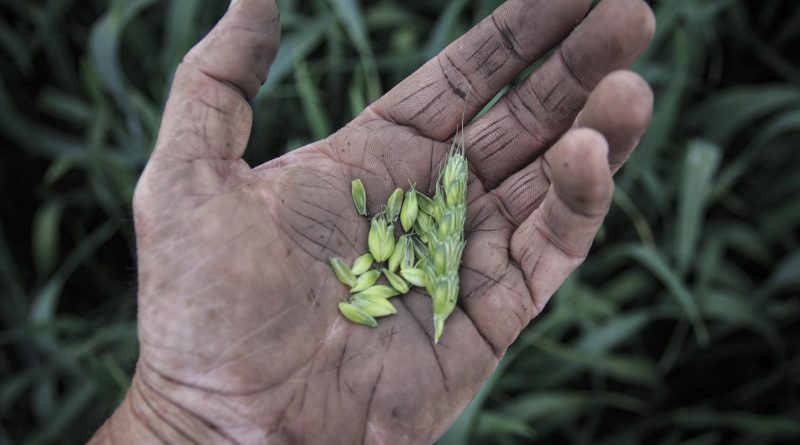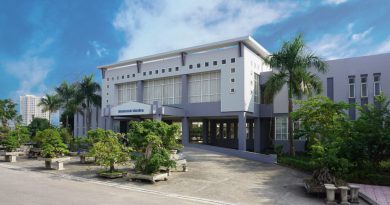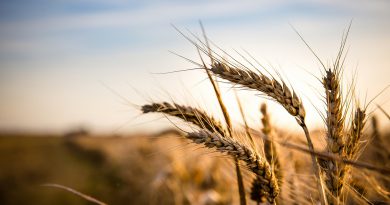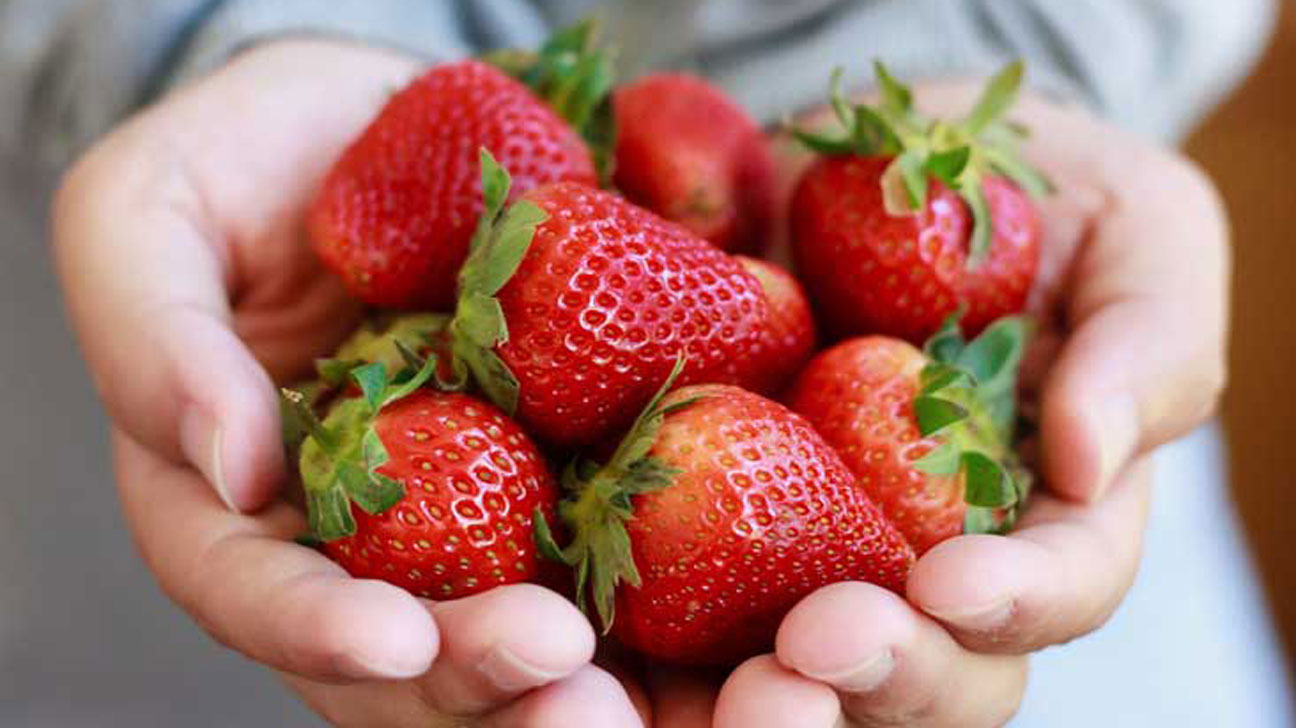Ultra dry Conservation: Even farmers can do it
| Ultra dry Conservation: Even farmers can do it | |
| Scientists have considered that “ultra-dry” method of seed storage, which involves the maintenance of very dry seeds under ambient or partly cooled conditions, may provide a cost-effective alternative for resource-constrained genebanks… | |
| Abstract:
Scientists have considered that the “ultra-dry” method of seed storage, which involves the maintenance of very dry seeds under ambient or partly cooled conditions, may provide a cost-effective alternative for resource-constrained genebanks in developing countries. Although a relatively simple process of dehydration that is well studied by genebanks, more effort is needed to make the conservation method more accessible to farmers for orthodox seeds conservation. Scenarios of how much more effective conservation can be participatory is discussed based on situations in Southeast Asia. Introduction Scientists have considered that “ultra-dry” method of seed storage, which involves the maintenance of very dry seeds under ambient or partly cooled conditions, may provide a cost-effective alternative for resource-constrained genebanks. This was based on the constraints faced by genebanks in developing countries such as lack of refrigeration equipment, unreliable electricity supply, poor maintenance practices and high operating costs (Zheng et.al 1998, Fassil and Engels, 1997) Steiner and Ruckenbauer (1995). Showed that after 110 years of hermetic sealed storage at temperatures between 10 and 15°C and at a moisture content of 3.12%, seeds of Hordeum vulgare showed 90% germination and Avena sativa 81%. In addition, some seeds of Agrostemma githago, Lolium temulentum, Sinapis alba, Sinapis arvensis, and Vaccaria hispanica were still capable of germinating. Demonstrating that ultra-dry, long-term seed storage under ambient temperature conditions can successfully be achieved with reducing risks and costs in germplasm conservation. Similar results were obtained by Neeta Singh et.al.,2003, showing that the optimum moisture content for storability of the crops at ambient temperature was less than 6% in all of the crops studied {safflower (Carthamus tinctorius L.), chickpea (Cicerarietinum L.), castor (Ricinus communis L.), sesame (Sesamum indicum L.), niger (Guizotiaabyssinica L.F. Cass.) groundnut (Arachis hypogaea L.) and cotton (Gossypium hirsutum L.)} stored at -20°C, 5°C and ambient temperature. Hong et.al. 2005 described their work on seeds of carrot, groundnut, lettuce, oilseed rape and onion stored at temperatures of 20 degrees C or -20 degrees C in dry to ultra dry conditions. After a decade, the change in seed moisture content of samples stored at -20 degrees C was small. Seed moisture content had increased after a decade at 20 degrees C to the level in equilibrium with ambient relative humidity. Pérez-García et al., 2007 documented that 37 species of Brassicaceae plant seeds kept under ultra-dry conditions (Seed moisture content ranged between 0.3 and 3%) at room temperature for 34-39 years had showed germination percentages that were similar to those preserved in the cold room. LI et.al.,2008, had results that indicated moisture content of seed was a key index for storage at ambient temperature (25°C) and 3.81% seem to be the best moisture content for ultra-dry seeds in their research. From these results, they suggested that seed moisture content less than 5% enhances longevity and ultra-dry could be an economical way for conservation of the plant genetic resource. Kruse and Yang (2010) showed that it may not be possible to give a general recommendation for the optimum range of moisture content or relative humidity. for ultra-dry storage. There was a significant lower storability in all species, when seed moisture content was below 2 %. In a manual Gómez-Campo (2007) described the use of silica-gel and practical use of “Kilner” (“Scotch”) jars with a rubber joint (common in kitchen use) to be suitable for ultra drying of seeds. The advantages of using silica gel were; 1. It provides a practical method to desiccate the seed samples. 2. It reaches moisture levels of 2-3%, 3. It keeps these levels indefinitely in tight containers. 4. It warns over possible anomalies (i.e. moisture intake) in the container – when used in combination with a coloured indicator. 5. It can be regenerated after its use through a dehydration process with heat. 6. It delays ageing by absorbing toxic gases produced during the storage process. Ultra-dry in the field More research needed for a simple kit available to farmers to conserve their orthodox seeds. In development of the kit we need similarities to how farmers are doing their seed storage for better adoption. The old techniques involved storing well dried seeds in clay pots or metal containers that are placed above their kitchen to keep pest away. Rice seeds stored is this manner, normally are viable within 2 years of storage (citation). With the new kit the farmers repeat the same process. They will keep their well dried seeds in an airtight container with silica gel to achieve an ultra dry environment. They now have the option to keep the seeds for more than 10 times their normal storage period. Several issues to consider in designing the container are 1. Amount of silica gel to seeds and the seed drying process, 2. Monitoring of the ultra dry conditions, 3. Viability testing of the seeds. Solution to these issues have to be simple for farmers to adopt. Amount of silica gel to seeds and the seed drying process The amount of silica can be calculated based on its absorption rate and the initial seed moisture content. Silica gel with indicator will facilitate the visual reading in situations of leaks in the containers. For access to the colour of the silica gel, the container material has to be transparent. Access to replace the silica gel should be simple with minimum expose to the ambient humidity. The drying technique for the seeds before placing in the ultra-dry container influences the initial viability of the seeds and the drying process in the container. Example, freshly harvested seeds of high moisture content cannot be dried at high temperature ie on concrete floor under the sun due to the high temperature. To achieve drying at low temperature, the containers could be used with rejuvenation of the silica gel. Monitoring of the ultra dry conditions, Once seed are dried in the container, there is need to monitor the indicator on the silica gel. The long storage period may result in farmers storing the seeds and with no monitoring. By keeping the seeds in a common accessible area like a community genebank or even shelves in a tea house/food shop where farmers come to socialize frequently, will enable constant monitoring. Another process is to enable farmers to register their container and variety with the genebank. Annual reminders by sms can be sent to farmers to check and to reply via sms the status of the silica indicator of their seed containers. It allows genebank to monitor all accessions maintained in a participatory manner with the farmers. The container material has to last more than a decade or more without deterioration. Design of a stackable container will minimize the storage space needed. Probably container air seals will need changing from time to time. Viability testing of the seeds. Farmers should be able to do a simple viability of their seeds every decade or so. This can be also be a time to change the containers where seeds are found to be have high viability. In this way containers need only to last for the period between viability tests. Genebank can send staff to train communities in their viability testing and to collect back accessions that farmers are no more interested to maintain. Scenarios for application Below are possible scenarios where the kit will be useful. Conserving seeds for the poor in mountainous areas in Vietnam Bac Ha is a poor district of Lao Cai mountainous Province with a population of 68000 people of 14 differentethnic minorities, of which is 47% of Mong people. The farmers in Bac Ha almost live on growing rice and maize crops. Bac Ha have very rich in plant genetic resources, recently two collection trips implemented by Plant Resources Center, there have been 343 accessions collected, of which, the group Grasses account for 25% (84% of rice and maize accessions), the group of Vegetables account for 30%, the group of Legumes account for 20% and 25 % of the rest are root crops. Among ethnic people, the Mong have the highest portion of accessions collected (58.60%) with traditional rice and maize varieties are main crops. All 20 communes in Bac Ha district have been ranked as the poor ones and need support from the government. Recently, the government issued a number of policies, projects to help the local people to reduce poverty. Of which highlight policies and support are to subsidy the fertilizer and hybrid varieties to increase production of food crops. By doing so, the area of hybrid rice and hybrid maize are growing quickly and gradually replace traditional varieties. Consequently, many traditional varieties tend to be gradually lost along with the traditional cultivation, taboos and cultural practices which have been maintained by many generations of farmers. As the UN have warned, Vietnam is one of the countries in the world will be seriously affected by climate change and sea level raising in the near future, thus ensuring food security for especially the vulnerable poor in the mountainous area should be concerned. The need for use of traditional varieties for sustainable agriculture for food security and the pressure to increased production for economic development usually results in the erosion of the traditional varieties. Genebanks have space constraints and will not be able to conserve all the traditional varieties. To complement the conservation efforts of the genebank ultra-dry storage techniques for seeds (rice and maize) can be used by farmers. Nevertheless, considerations of seed quantity for each variety should be large enough so that farmers can multiply quickly in case of crop failure or natural disaster. The traditional knowledge related how to grow, to use should be documented and stored along with seed conservation. Displacement of traditional varieties in Laos Farmers mainly grow rice for subsistence. In areas where weather is a challenge, only one rice cropping is possible per year. With introduction of better productive varieties many of their landraces are being eroded (citation?). Only those with better taste and production are retained. With more pressure to produce surplus for the market from the Extension services, there will be more pressure to displace the traditional varieties with high production varieties. An option is to reduce use irrigation for rice off-season production to reduce pressure on landrace displacement. The process is not be simple and displacement of traditional varieties cannot be avoided in the move towards a market driven rice economy. Using ultra-dry will enable farmers to store their traditional varieties over longer periods while they embark on using modern varieties. It acts as an insurance policy in case the new varieties fail due to weather and agronomic conditions after several seasons Lost of heirloom rice varieties in Malaysia Farmers in Sarawak especially the Iban ethnic group have a strong cultural traditions and knowledge attached to rice cultivation. The “Padi Pun” are heirloom varieties maintained at household level and not shared outside the family. The introduction of oil palm and hybrid rice varieties will erode the cultural knowledge, the lost of heirloom and traditional varieties, and possibly traditional agriculture practices. For heirloom varieties, that have strong cultural associations, they are maintained by the elderly farmers in the village if their children are not with them. The cultural attachment to heirloom varieties that are not shared meant that Genebanks will not normally have such accessions. The ultra-dry storage techniques for seed can help in maintaining the heirloom rice varieties and conserving the rice culture of the Iban community. The knowledge on how these are grown, the taboos and cultural practices are important to be documented and stored along with the seeds. Impact when even farmers can do it Traditional varieties have been grown for long time and can be assume to be adapted to the environment. The introduction of hybrid and cash crops puts pressure on farmers to give up their traditional varieties. The conservation kit will allow farmers to experiment with new varieties of rice or conversion to cash crops and have a safety net or seed insurance to fall back on in case of future crop failures. For heirloom varieties, it will allow the community to conserve their cultural practices and to discover the reason for maintaining heirloom varieties. The approach will change the current concept of and collecting missions, genebanking and access and benefit sharing of germplasm resources. Conclusion Even farmers can do it or participatory conservation will require more work to make the technique usable at the community level. The Research will include; – Design of suitable containers and delivery of desiccants to facilitate ultra dry storage by farmers – Develop seed and desiccant monitoring procedures for farmers – Develop procedures for registration, monitoring and compilation of accession data as an extended of the genebank’s accession. – Develop communication appilcations to facilitate data collection by farmers and communication with genebank – Research to find the moisture suitable and easy to achieve under farm conditions and equipment. – Explain the economics of seed storage, ease of practice, period of storage uses advantages and need for conservation. – Demonstration and exhibitions of this ultra dry technique to be given by extension workers of the Dept. of Agriculture and seed companies. – Short courses such as plant breeding and community biodiversity management can be given to more advanced farmers . – Seed companies and extension services promoting high yielding varieties should consider providing ultra-dry containers to farmers as their social responsibility activity. References Yi LI,* ,Jianjun QU, XiaomingYANG, and LizheAN (2008), A report on ultra-dry storage experiment of Zygophyllum xanthoxylon seeds, in Botanical Studies (2008) 49: 243-251. Pérez-García, F., González-Benito, M.E. and Gómez-Campo, C. (2007), High viability recorded in ultra-dry seeds of 37 species of Brassicaceae after almost 40 years of storage in Seed Sci. & Technol., 35, 143-153 Neeta Singh, Anurudh K. Singh and Baldev S. Dhillon, 2003, CHAPTER 41 Effect of Ultra-Drying on Ex Situ Seed Conservation in Seed conservation: turning science into practice. Smith RD, Dickie JB, Linington SH, Pritchard HW, Probert RJ, eds. 2003. London: The Royal Botanic Gardens, Kew. £59•95 (soft back). 1023 pp Hong, T. D., Ellis, R. H., Astley, D., Pinnegar, A. E., Groot, S. P. C. and Kraak, H. L. (2005) Survival and vigour of ultra-dry seeds after ten years of hermetic storage. Seed Science and Technology, 33 (2). pp. 449-460. ISSN 0251-0952 César Gómez-Campo (2007), A guide to efficient long term seed preservation in Monographs ETSIA, Univ. Politécnica de Madrid 170, 1-17 (2007) A.M. Steiner and P. Ruckenbauer (1995). Germination of 110-year-old cereal and weed seeds, the Vienna Sample of 1877 in Verification of effective ultra-dry storage at ambient temperature. Seed Science Research, 5, pp 195-199. H. Fassil & J Engels (1997). Seed Conservation Research: IPGRI’s Strategies and Activities, Volume 2 Number 9 – December 1997 M. Kruse and Q. Yang (2010). Storability of ultra dry wheat, rape and onion seeds, 29th ISTA Congress-June18-2010, SympSession3-P5, Guang-Hua Zheng, Xin-Ming Jing and Kar-Ling Tao (1998). Ultradry seed storage cuts cost of gene bank, in Nature 393, 223-224 (21 May 1998) |
|
| Paul Quek, Baek Hyung-Jin, Nguyen Khac Quynh, Zhang Zongwen, Chay Bounphanousay, Chin Hoong Fong | |



